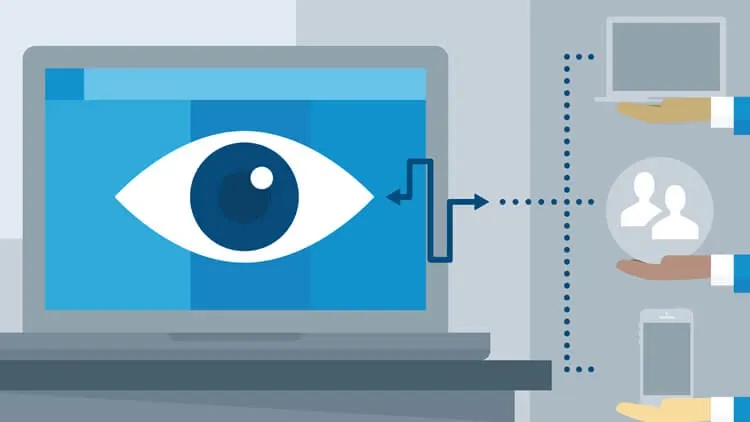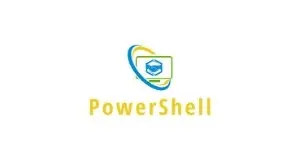This plan includes
- Limited free courses access
- Play & Pause Course Videos
- Video Recorded Lectures
- Learn on Mobile/PC/Tablet
- Quizzes and Real Projects
- Lifetime Course Certificate
- Email & Chat Support
What you'll learn?
- Learn how to deploy and manage vCenter cluster environment
- Understand vCenter components such as vSphere HA, vCenter HA, DRS, Fault Tolerance
- Create and Manage virtual machines, templates, clones, and snapshots
- Configure and Manage the vCenter Network, Storage, and Virtual Appliances
- Understand Distributed and Standard switch
- Learn and understand VMWare VSAN
- Learn and understand VMWare ESXi
- Deploy and manage VMWare vCenter monitoring using Zabbix
Course Overview
Complete guidance for Learning VMWare vCenter. If you're thinking to become VMWare vSphere vCenter 6.7 Administrators, or you want to start to understand vSphere vCenter, then this course is perfect for you. You will see video after video, from beginners with explanations that are easy to understand. Also this course will provide many examples that make it easy for you to follow and understand.
This course has 17 sections, 126 lectures, and 11 hours duration. Most videos are about how to do configuration and creating dashboard/panel by example. You will follow step by step how to use vCenter 6.7 component to manage virtual data center.
In this course, you will learn how to:
-
Installing vCenter 6.7
-
Managing vSphere vCenter 6.7
-
Managing(creating and removing) Standard and Distributed switch
-
Creating datacenter and cluster
-
Managing(adding and removing) ESXi host
-
Configuring ESXi Host firewall
-
Managing vCenter HA/vSphere HA/vMotion/DRS/Fault Tolerance
-
Managing Affinity rules
-
Managing ESXi upgrading/HealthCheck
-
Forwarding log/NTP/DNS configuration on ESXi Host
-
Managing(creating/removing/snapshot/Clonning) Linux and Windows VM (Virtual Machine)
-
Creating/Updating VM template
-
Installating VMWare tools
-
Managing vCenter security access
-
Backup and Restore vCenter
-
Managing(building/removing) VMWare VSAN cluster
-
Monitoring vCenter components using Zabbix
-
Creating Grafana Dashboard for ESXi Host/VM/VSAN Storage
-
etc.
After you finished this course, you will have confident to use and manage VMWare vCenter infrastructure.
Pre-requisites
- Has basic Networking knowledge
- Has basic Linux administrator knowledge
Target Audience
- Student who want to learn VMWare vCenter
- Student who want to manage VMWare vCenter
Curriculum 138 Lectures 11:25:40
Section 1 : Introduction
- Lecture 2 :
- Why Using Virtualization Technology?
- Lecture 3 :
- After and Before Using Virtualization Tehcnology
- Lecture 4 :
- Traditional and Virtual Infrastructure Comparation
- Lecture 5 :
- What is VMWare Virtual Infrastructure?
- Lecture 6 :
- What is VMWare, vSphere, and vCenter?
Section 2 : Installing and Managing ESXi
- Lecture 1 :
- What is ESXi?
- Lecture 2 :
- ESXi Software and Hardware Compatibility
- Lecture 3 :
- Accessing vSphere ESXi 6.7 Page
- Lecture 4 :
- Setting ESXi DNS and NTP Configuration
- Lecture 5 :
- Checking ESXi Host Health and Log Status
- Lecture 6 :
- Understanding ESXi Host Boot Process
- Lecture 7 :
- Resetting ESXi Host Password
- Lecture 8 :
- Upgrading ESXi Host Version
- Lecture 9 :
- Enabling and Disabling ESXi Host Remote SSH Login
Section 3 : VMWare Storage Datastore
- Lecture 1 :
- What is Storage Datastore?
- Lecture 2 :
- Understanding VMWare VSAN Storage
- Lecture 3 :
- Building VSAN Storage
- Lecture 4 :
- Creating/Removing Directory and Uploading/Downloading Files
Section 4 : Managing Data Centers, Clusters, and ESXi Hosts
- Lecture 1 :
- Creating/Removing Data Center and Cluster
- Lecture 2 :
- Adding a New ESXi Host to Data Center Cluster
- Lecture 3 :
- Migrating ESXi Host to Other Cluster
- Lecture 4 :
- Removing ESXi Host from Cluster
- Lecture 5 :
- Turning On/Off ESXi Host in Maintenance Mode
Section 5 : Managing vSphere Networking
- Lecture 1 :
- What is SDN (Software Defined Networking)?
- Lecture 2 :
- Understanding Standard and Distributed Switch
- Lecture 3 :
- Creating and Removing Standard Switch
- Lecture 4 :
- Creating and Removing Distributed Switch
- Lecture 5 :
- Creating and Removing Ditributed Switch Port Group
- Lecture 6 :
- Adding ESXi Host to Distributed Switch
- Lecture 7 :
- Understanding MTU (Maximum Transmission Unit)
- Lecture 8 :
- Enabling Jumbo Frame on Distributed/Standard Switches and VMKernel Adapter
- Lecture 9 :
- Managing ESXi Host Speed and Duplex Configuration
- Lecture 10 :
- Understanding ESXi Host Standard Switch Networking Security Policy
- Lecture 11 :
- Create VMKernel Adapter on ESXi Host
- Lecture 12 :
- Understanding Switch Traffic Shaping Policies
- Lecture 13 :
- Understanding Switch Load Balancing Policies
- Lecture 14 :
- Understanding Network Failover Detection
- Lecture 15 :
- How to Handle Network Failures
- Lecture 16 :
- Creating Port Mirroring on Distributed Switch
Section 6 : Managing, Creating VM and Snapshot
- Lecture 1 :
- Creating Linux VM from ISO Image File
- Lecture 2 :
- Installing Windows VM Using ISO Image File
- Lecture 3 :
- Changing VM Configuration (CPU/Memory/Interface)
- Lecture 4 :
- Setting VM Networking, IP Address, Gateway CentOS 7
- Lecture 5 :
- Setting VM Networking, IP Address, Gateway Ubuntu 16.04
- Lecture 6 :
- Disabling SELinux and Firewall
- Lecture 7 :
- Accesing VM
- Lecture 8 :
- Creating VM from Template
- Lecture 9 :
- Clonning VM
- Lecture 10 :
- Removing VM
- Lecture 11 :
- Creating and Removing VM Snapshot
- Lecture 12 :
- Understanding Virtual Network Adapter Type
- Lecture 13 :
- Setting VM Startup/Shutdown on ESXi Host
- Lecture 14 :
- Doing Power On/Off VM Using vim-cmd CLI
Section 7 : VMWare Tools
- Lecture 1 :
- What is VMWare Tools?
- Lecture 2 :
- Installing VMWare Tools on Linux VM
- Lecture 3 :
- Installing VMWare Tools on Windows VM
Section 8 : Managing Linux VM (Virtual Machine)
- Lecture 1 :
- Adding NIC Interface and IP Address on Linux VM
- Lecture 2 :
- Disabling Power Menagement on Windows VM
- Lecture 3 :
- About Thick and Thin Disk Type
- Lecture 4 :
- Adding HardDisk on Linux VM
- Lecture 5 :
- Sizing LVM Disk on Linux VM
- Lecture 6 :
- Sizing Non-LVM Disk on Linux VM
- Lecture 7 :
- Changing VM's CPU and Memory
- Lecture 8 :
- Migrating VM between ESXi Host
- Lecture 9 :
- Hot and Cold VM Migration
- Lecture 10 :
- Configuration Maximum on vSphere 6.7
Section 9 : Managing Windows VM (Virtual Machine)
- Lecture 1 :
- Adding NIC Interface and IP Address on Windows VM
- Lecture 2 :
- Adding HardDisk on Windows VM
- Lecture 3 :
- Extending Harddisk Size on Windows VM
Section 10 : vSphere vCenter
- Lecture 1 :
- Installing vSphere vCenter Applience
- Lecture 2 :
- Accessing VMWare Applience Management
- Lecture 3 :
- vCenter Syslog Forwarding Configuration
- Lecture 4 :
- vCenter Backup Configuration
- Lecture 5 :
- Upgrading vCenter 6.7 to 6.7U3
- Lecture 6 :
- Remoting Login vCenter Using SSH
Section 11 : vCenter HA (High Availability)
- Lecture 1 :
- Understanding vCenter HA Diagram and Function
- Lecture 2 :
- Creating vCenter HA
- Lecture 3 :
- Initiating vCenter HA Failover
- Lecture 4 :
- Removing vCenter HA
- Lecture 5 :
- vCenter HA SNMP Trapping Configuration
- Lecture 6 :
- Resetting vCenter HA SSH Keys
- Lecture 7 :
- vCenter HA Cluster Mode
- Lecture 8 :
- Restoring vCenter from Backup Data
- Lecture 9 :
- Shutdown and Rebooting vCenter HA Nodes
- Lecture 10 :
- Creating vCenter HA Node's Support Bundles Log File
Section 12 : VMWare vSphere FT (Fault Tolerance)
- Lecture 1 :
- Understanding vSphere Fault Tolerance (FT)
- Lecture 2 :
- Requirement for vSphere FT Configuration
- Lecture 3 :
- Understanding VMWare vLockstep
- Lecture 4 :
- Creating VMKernel Adapter for Fault Tolerance (FT)
- Lecture 5 :
- Enabling vSphere Fault Tolerance (FT) on VM
Section 13 : vSphere HA (High Availability) and DRS (Distributed Resource scheduler)
- Lecture 1 :
- vSphere Resource and vCenter Management
- Lecture 2 :
- Understanding DRS (Distributed Resource Scheduler)
- Lecture 3 :
- Enabling DRS (Distributed Resource Scheduler)
- Lecture 4 :
- DRS Monitoring State
- Lecture 5 :
- What is vSphere HA (High Availabity)?
- Lecture 6 :
- Enabling vSphere HA (High Availability)
- Lecture 7 :
- vSphere HA Cluster Monitoring
- Lecture 8 :
- Network Maintenance and vSphere HA
- Lecture 9 :
- Admission Control and vSphere HA Function
- Lecture 10 :
- vSphere HA Heartbeat Datastores
- Lecture 11 :
- Managing DRS and Affinity Rules
Section 14 : vSphere vCenter Monitoring
- Lecture 1 :
- Monitoring Nerwork, Disk, CPU and Memory Utilization and Performance
- Lecture 2 :
- vCenter Logging Monitoring
- Lecture 3 :
- SNMP, Email Alert, and Log Forwarding Configuration
- Lecture 4 :
- Checking vCenter Health Status
Section 15 : vSphere 6.7 Security and Access Permissions
- Lecture 1 :
- ESXi Host Firewal and Process Management
- Lecture 2 :
- Lockdown Mode and Host Encryption Mode
- Lecture 3 :
- vSphere and ESXi User Type
- Lecture 4 :
- Creating and Removing vCenter User and Group
- Lecture 5 :
- Understanding vCenter Role Access
- Lecture 6 :
- Managing vCenter Role Access and Global Permissions
- Lecture 7 :
- Password Expire, Lockout Policy, and Token Policy
- Lecture 8 :
- Setting Active Directory Configuration
Section 16 : Monitoring vCenter Using Zabbix
- Lecture 1 :
- Monitoring VMWare vCenter
- Lecture 2 :
- Monitoring ESXi Host
- Lecture 3 :
- Monitoring VM
- Lecture 4 :
- VM Auto Registration
Section 17 : Building VMWare Grafana Dashboard
- Lecture 1 :
- Creating VMWare Hypervisor/ESXi Dashboard
- Lecture 2 :
- Creating VM Dashboard
- Lecture 3 :
- Understanding VSAN Metrics Collection, Grafana, and Zabbix
- Lecture 4 :
- Creating VSAN Usage Dashboard
- Lecture 5 :
- Creating VSAN Health Dashboard
- Lecture 6 :
- Creating VSAN Capacity Dashboard
Section 18 : Using Ansible to Manage VMWare
- Lecture 1 :
- Ubuntu : Installing Ansible and VMware Plugin
- Lecture 2 :
- Using Ansible to Deploy a New VM from Template
- Lecture 3 :
- Using Ansible to Deploy Multiple VMs
- Lecture 4 :
- Managing ESXi Host DNS Configuration Using Ansible Playbook
- Lecture 5 :
- Managing ESXi Host NTP Configuration
- Lecture 6 :
- Getting Remote ESXi Host System Configuration Information
- Lecture 7 :
- Managing ESXi Host IPv6 Support
- Lecture 8 :
- CentOS : Installing Ansible and VMWare Plugin
Section 19 : Using ESXCLI Command Line
- Lecture 1 :
- Checking Hardware Using ESXCLI Command Line
- Lecture 2 :
- Checking System Configuration Using ESXCLI Command Line
- Lecture 3 :
- Checking Network Configuration Using ESXCLI Command Line
- Lecture 4 :
- Managing Storage Using ESXCLI Command Line
- Lecture 5 :
- Checking ESX Host Software Information Using ESXCLI Command Line
- Lecture 6 :
- Managing User Using ESXCLI Command Line
Our learners work at
Frequently Asked Questions
How do i access the course after purchase?
It's simple. When you sign up, you'll immediately have unlimited viewing of thousands of expert courses, paths to guide your learning, tools to measure your skills and hands-on resources like exercise files. There’s no limit on what you can learn and you can cancel at any time.Are these video based online self-learning courses?
Yes. All of the courses comes with online video based lectures created by certified instructors. Instructors have crafted these courses with a blend of high quality interactive videos, lectures, quizzes & real world projects to give you an indepth knowledge about the topic.Can i play & pause the course as per my convenience?
Yes absolutely & thats one of the advantage of self-paced courses. You can anytime pause or resume the course & come back & forth from one lecture to another lecture, play the videos mulitple times & so on.How do i contact the instructor for any doubts or questions?
Most of these courses have general questions & answers already covered within the course lectures. However, if you need any further help from the instructor, you can use the inbuilt Chat with Instructor option to send a message to an instructor & they will reply you within 24 hours. You can ask as many questions as you want.Do i need a pc to access the course or can i do it on mobile & tablet as well?
Brilliant question? Isn't it? You can access the courses on any device like PC, Mobile, Tablet & even on a smart tv. For mobile & a tablet you can download the Learnfly android or an iOS app. If mobile app is not available in your country, you can access the course directly by visting our website, its fully mobile friendly.Do i get any certificate for the courses?
Yes. Once you complete any course on our platform along with provided assessments by the instructor, you will be eligble to get certificate of course completion.
For how long can i access my course on the platform?
You require an active subscription to access courses on our platform. If your subscription is active, you can access any course on our platform with no restrictions.Is there any free trial?
Currently, we do not offer any free trial.Can i cancel anytime?
Yes, you can cancel your subscription at any time. Your subscription will auto-renew until you cancel, but why would you want to?
Instructor

249635 Course Views
4 Courses



 Tech & IT
Tech & IT
 Business
Business
 Coding & Developer
Coding & Developer
 Finance & Accounting
Finance & Accounting
 Academics
Academics
 Office Applications
Office Applications
 Art & Design
Art & Design
 Marketing
Marketing
 Health & Wellness
Health & Wellness
 Sounds & Music
Sounds & Music
 Lifestyle
Lifestyle
 Photography
Photography



















